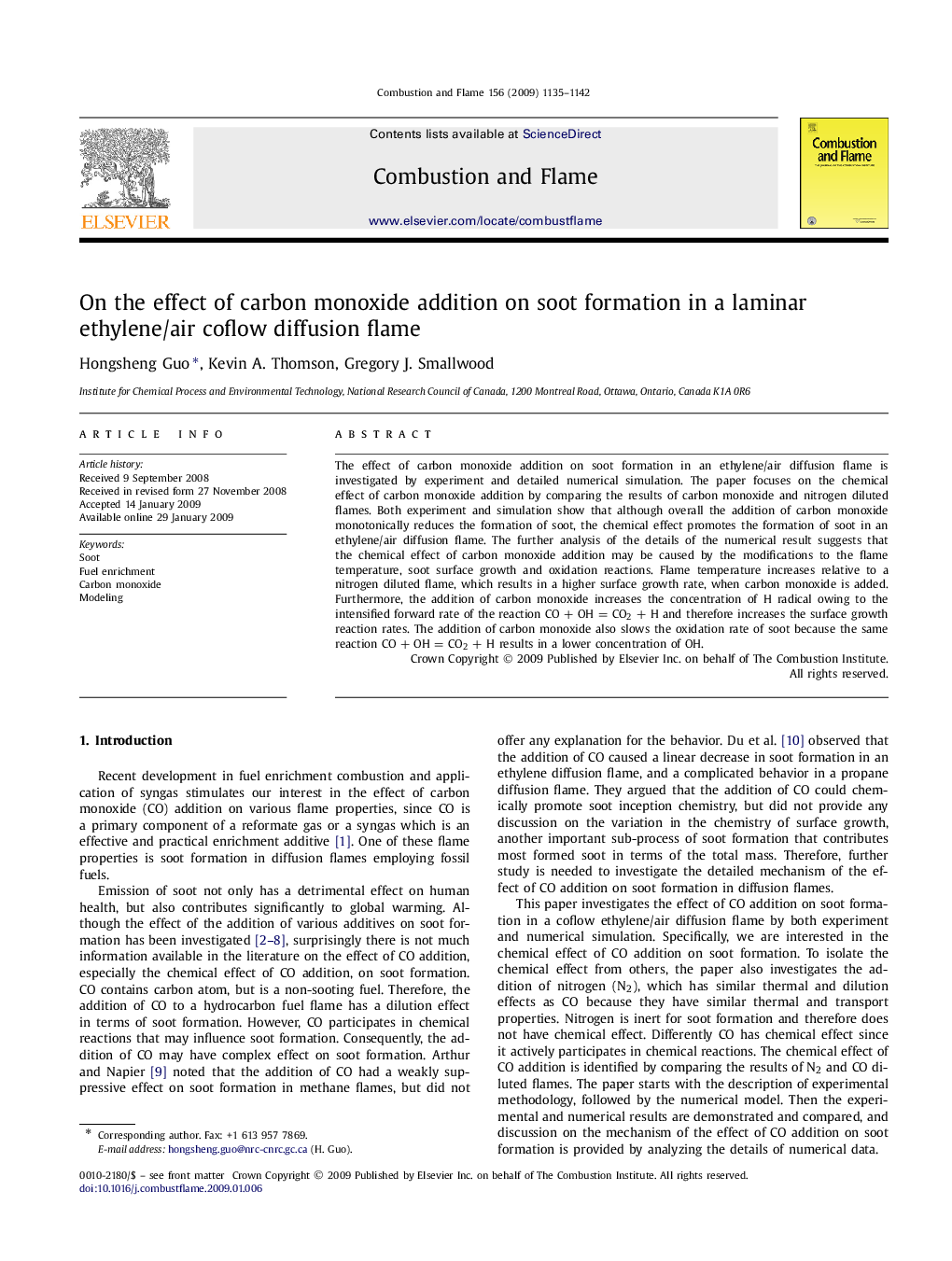| Article ID | Journal | Published Year | Pages | File Type |
|---|---|---|---|---|
| 166981 | Combustion and Flame | 2009 | 8 Pages |
The effect of carbon monoxide addition on soot formation in an ethylene/air diffusion flame is investigated by experiment and detailed numerical simulation. The paper focuses on the chemical effect of carbon monoxide addition by comparing the results of carbon monoxide and nitrogen diluted flames. Both experiment and simulation show that although overall the addition of carbon monoxide monotonically reduces the formation of soot, the chemical effect promotes the formation of soot in an ethylene/air diffusion flame. The further analysis of the details of the numerical result suggests that the chemical effect of carbon monoxide addition may be caused by the modifications to the flame temperature, soot surface growth and oxidation reactions. Flame temperature increases relative to a nitrogen diluted flame, which results in a higher surface growth rate, when carbon monoxide is added. Furthermore, the addition of carbon monoxide increases the concentration of H radical owing to the intensified forward rate of the reaction CO + OH = CO2 + H and therefore increases the surface growth reaction rates. The addition of carbon monoxide also slows the oxidation rate of soot because the same reaction CO + OH = CO2 + H results in a lower concentration of OH.
